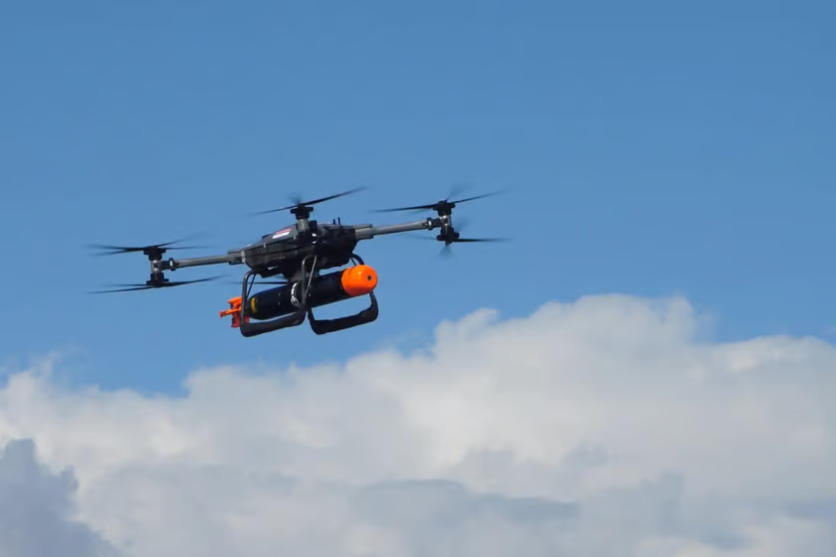In a recent NATO exercise off the coast of Portugal, a notable milestone was achieved in naval drone technology. During the exercise, a BAE Systems/Malloy Aeronautics T-600 heavy lift Uncrewed Air System (UAS) successfully executed the launch of an inert Sting Ray training variant anti-submarine torpedo.
The T-600, an electric-powered demonstrator aircraft, showed its capabilities during the exercise. This versatile UAS is equipped with vertical take-off and landing capabilities, enabling it to carry a payload of up to 200kg and reach speeds of up to 140km/h.
Its operational range spans up to 80km, contingent on payload and mission requirements. It is about the size of a small car and is designed to be easily disassembled for transportation.

Release of Anti-Submarine Torpedo at NATO Exercise
The crucial part of the exercise was the release of the inert Sting Ray training variant anti-submarine torpedo. It was the first time such a weapon had been deployed by a drone as part of a mission at sea. That means this is the first-ever instance of such an operation involving the T-600 demonstrator.
The exercise, known as REPMUS (Robotic Experimentation and Prototyping with Maritime Uncrewed Systems), encompassed the participation of 15 NATO countries, as well as Ireland and Sweden.
REPMUS served as a controlled environment for testing concepts, requirements, and emerging technologies on Maritime Uncrewed Systems. The T-600 demonstrator holds a vital role in the development and validation of technologies applicable to the T-650, a forthcoming design of an all-electric heavy-lift UAS.
The T-650, envisaged to offer rapid reconfiguration capabilities for military, commercial, and humanitarian applications, is poised to deliver enhanced capabilities in areas like automated logistics, casualty evacuation, and anti-submarine warfare, all while minimizing environmental impact.
Read Also : US Military Leaked Document Update: NATO-Russia Wagner Group Attempted Weapon Transaction Revealed
Uncrewed Aircraft Systems
The UAS offers swift deployment and portability advantages. They present an additional avenue to safeguard costly assets and personnel from potential risks.
The integration of UAS in Anti-Submarine Warfare, especially in conjunction with crewed helicopters and dedicated ASW surface vessels, enhances operational flexibility and the use of Sting Ray torpedoes.
The T-650 program operates within FalconWorks, a research and development center under BAE Systems' Air sector, aimed at delivering advanced combat air capabilities.
This demonstration at REPMUS is a testament to the collaborative efforts of BAE Systems, Malloy Aeronautics, L3 Harris, and General Dynamics UK, all partners in this milestone achievement.
Contributions from L3Harris and General Dynamics UK, in particular, played a crucial role in enabling weapon integration on heavy-lift UAS through the provision of advanced systems.
"Uncrewed Aircraft Systems (UAS) can be quick to launch and easy to carry. They represent another opportunity to keep higher cost assets and their crew out of harm's way and will have an increasing ASW role alongside crewed helicopters and dedicated ASW surface vessels," Dave Quick, Head of Underwater Weapons, BAE Systems Maritime Services, said in a press statement.
"UAS launched Sting Ray would enable torpedo capability to be carried by a variety of naval platforms, providing increased operational flexibility for the use of Sting Ray," he added.
Related Article : NATO Secretary-General Encourages South Korea to Directly Send Military Weapons to Ukraine

ⓒ 2025 TECHTIMES.com All rights reserved. Do not reproduce without permission.




